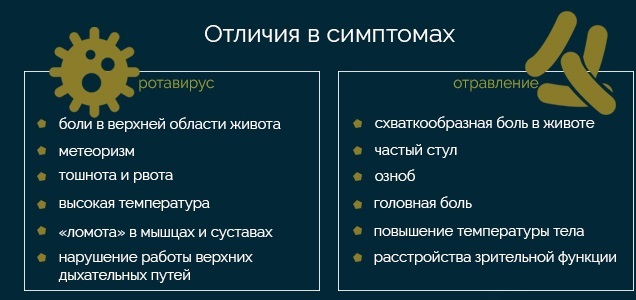Malaria - Acute infection is transmitted through blood, characterized by recurrent febrile seizures, alternating with afebrile periods, pattern whose appearance corresponds to the cycle of the pathogen, mainly affecting the erythrocytes, anemia, liver enlargement and spleen.
Malaria is commonly detected from 45 ° north to 40 ° south latitude (but mostly in the tropics and subtropics) at an altitude of 0 to 1,800 meters above sea level.
Pathogens - simply sporozoans kind plasmodium. Vectors - mosquitoes of the genus Anopheles. Morbidity is directly dependent on the size of the mosquito population and the number of patients, employees reservoir of infection. In connection with the development of the tourism industry of the disease detected in countries that lie outside the natural range.
Natural resistance to malaria infection have individuals with a congenital deficiency of glucose-6-dehydrogenase, t. K. Parasites are unable to utilize glucose-monophosphate shunt as a source of energy and can not evolve in such conditions erythrocytes. Persons with impaired hemoglobin also insensitive to contamination, t. To. The parasites are unable to multiply in red blood cells with a modified form, such as in patients with sickle cell disease.
The incubation period for malaria depending on the type of agent varies from 8 to 25 days (at the three-day can reach 8-14 months).
presentation of malaria
- Fever, anemia and circulatory disorders (for all forms). Especially severe tropical malaria.
- Fever was observed in the release of parasites from disrupted erythrocytes; Intervals between episodes displays depend on the biological cycle of the parasite. Starting acute body temperature can reach 40-41,7 ° C (temperature rise normally observed in the daytime), a few hours quickly drops to 35-36 ° C; typically profuse sweating.
- Anemia - a consequence of the massive destruction of red blood cells.
- Blackwater fever in tropical malaria is characterized by rapid massive destruction of red blood cells, jaundice, Low back pain. Circulatory disorders caused by an increase in body temperature. Vasodilation leads to lower blood pressure. Subsequent vasospasm, increased blood viscosity, plugging of capillaries residues erythrocytes leads to disruption of blood supply to organs and tissues.
Diagnostics
- Blood analysis.
- Smear microscopy for parasites.
To prepare smears using capillary and venous blood.
malaria treatment
- In malaria caused by Plasmodium sensitive to chloroquine: chloroquine orally to adults - for the first reception 1g, then after 6 h - 500 mg, in the 2nd and 3rd days - 500 mg 1 r / d.. Babies -.. On the first receiving 10 mg / kg (500 mg), followed by 5 mg / kg every 6 hours during the 2nd and 3rd days at 5 mg / kg p 1 / d.
- In uncomplicated malaria current induced plasmodia resistant to chloroquine: the combination of quinine and tetracycline or clindamycin, pyrimethamine or sulfadoxine +. Adults - quinine 650 mg 3 / day.. for 3-7 days, tetracycline, 250 mg of 4 p. / day. for 7 days Clindamycin 450 mg of 3 p. / day. for 3 days, pyrimethamine sulfadoxine + 3 tablets in one portion. Children - quinine 3 p / day.. for 3-7 days, pyrimethamine sulfadoxine + 1/2 tablets (up to 4 years) 1 tablet (4-8 years), 2 tablets (8-12 years). Pregnant - quinine 650 mg 3 / day.. for 3-7 days Clindamycin 450 mg orally every 8 hours. for 3 days. Mefloquine - adults 15 mg / kg single oral dose (maximum 1250 mg).
- In a complicated (malignant) during malaria:. Quinine 10 mg / kg i / v infusion over 1-2 hours, then or constant infusion at a rate of 0.02 mg / kg / min, or 10 mg / kg s / c. every 8 hours. parasitaemia to <1% and / or until the patient's ability to take anti-malarial drugs inside. The drug (usually quinine in therapeutic dose) should continue for at least 3 days from the start of morbidity manifestations.
Forecast
Complications of malaria (in the absence of adequate treatment): possible damage to the brain, lung edema, splenic rupture, seizures, psychotic disorders, coma, Blackwater fever.
The prognosis for timely diagnosis and adequate treatment favorable.
prevention
- Chloroquine. Adults - 300 mg of base 1 into the p / week.. The drug should begin in 2 weeks. before arriving in the area, where you can catch malaria, and continue 4-6 weeks. after leaving it. Babies - 5 mg / kg / week.; reception mode for adults (for a maximum of 300 mg).
- Mefloquine. Adults - 250 mg 1 p / week.. inside. The drug should be started 1 week. before arriving in the area, where you can catch malaria, and continue to 4 weeks. after leaving it. Babies with body weight 15-19 kg - 1/4 tablet; 20-30 kg - 1/2 a tablet; 31-45 kg - 3/4 a tablet; above 45 kg - 1 tablet. receive mode as in adults.
- In the presence of contraindications to mefloquine or chloroquine: Children older than 8 years, adults - doxycycline 100 mg orally 1 p / day.. Begin taking the drug 1-2 days before arrival in the malarial area and continue to 4 weeks. after leaving it.



